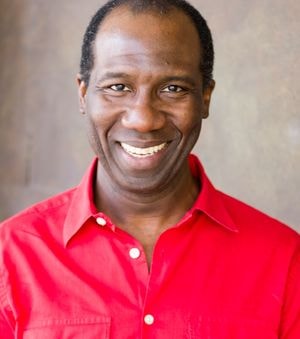During the summer of 2020, there were more than 7,000 Black Lives Matter protests around the world. Following the murders of Ahmaud Arbery, Breonna Taylor, and George Floyd, people on every continent, in every hemisphere, said “enough is enough.” This movement was felt in nearly every sector of our society, and theatres were no exception; across the U.S., they released solidarity statements with the Black Lives Matter movement, and some even began to announce commitments to be held accountable for, and to renounce, institutional racism and exclusion.
The We See You White American Theatre manifesto, released that June, implored the whole theatre industry make a similar commitment, with demands outlining the many ways working conditions needed to change to become less racist, sexist, and heteronormative. For many theatres, this 31-page document became a kind of checklist for their diversity strategies, and started many conversations and some changes in programming.
While WSYWAT and other movements pointed to systemic problems, making systemic change has proven a lot more complicated. It’s one thing to craft aspirational language, but many predominantly white theatres around the country are finding that the work of creating a more equitable workplace takes many more steps than they may have initially expected, and every theatre has a different starting place.
At Ensemble Studio Theatre in New York—a new-play-focused theatre with a budget around $1.6 million—the staff and artists started this process in 2016 by sending the company’s white artistic director, William Carden, to artEquity’s facilitator training. Like most theatres, EST has more distance to go on the journey. Its artists and staff have shared some of the story of their efforts to change with American Theatre, in the hopes that this might offer some insights and open up a conversation about what it takes to shift culture.
Overboard
EST, located in the midtown Manhattan neighborhood of Hell’s Kitchen, was founded in 1968 by the late Curt Dempster. The theatre quickly garnered a reputation for developing new and experimental work, and today EST is known primarily for its Marathon of One-Act Plays; the Sloan Foundation Project, which develops science-themed plays; and the Youngblood program for emerging New York-based writers.
For most of the theatre’s history, these programs have elevated and celebrated the work of white artists. As the member base has grown from 20 artists to more than 600, the company has become more diverse, but that diversity has seldom been reflected in the makeup of the staff and board.
Like most theatres, EST started by diversifying the work onstage, thinking it would help to create a more inclusive culture offstage. But after years of running into the same issues, they realized that the board needed to change. At most nonprofits, the board advises the executive leadership and holds the power to decide which projects get funded. And new board members often come into an organization through the recommendation of existing board members. Folks at EST realized that for more diverse work to make it to the stage—and for their diversity, equity, and inclusion (DEI) efforts to stick—more diverse individuals had to be granted the power of the greenlight.

In 2017, EST board member Russell G. Jones had convened five “Blind Spot Salons” to raise awareness about implicit bias among artists, EST/Youngblood members, board members, and staff. At the time, the board was almost completely white. Jones said it was the first time many people at the theatre had conversations about privilege and power structures.
“I think what was harder for them was to look at how white supremacy is embedded in the culture of the largely white board,” said artistic director Carden. “This is what a lot of theatres are going through. We’re all trying to answer the question: How do you change the culture and share power?”
Not everyone was thrilled. Since 2019, Jones said, they’ve lost six board members, all of whom are white. Now the board is composed mostly of women of color. This year, EST also worked with ALJP Consulting on transforming the makeup of the board so that the company’s DEI efforts are being embraced and led from that level.
“It certainly felt like white flight in reaction to our coming into alignment with the DEI & anti-racism work,” said Jones of the board turnover.
The board is currently composed of six officers and nine directors, and they are currently in conversation about reimagining the role of the board to be something other than simply financial. Jones admitted uncertainty about what the board will look like in the next few years, but said he’s hopeful.
“On the board, we are working on a transfer of power from white men to Black women and other people of color,” said Jones. “I told them it’s gonna be hard and it’s gonna suck for a while.”
Translating Representation
The theatre’s Blind Spot Salons and other DEI conversations had already permeated other workings of the theatre. Linsay Firman, EST’s director of play development and associate director of the EST/Sloan Project, pointed to a production as late as 2019 as a turning point for the theatre.
“We did Behind the Sheet by Charly Evon Simpson, and it felt really wrong that the people on the ‘giving notes’ side of the table were all white,” said Firman, who is also white. This dynamic persisted, even after the Blind Spot Salons of two years earlier.
Behind the Sheet is a fictionalized version of the tale of the enslaved Black women on whom Dr. J. Marion Sims, often seen as the “father” of modern gynecology, did experiments to develop such techniques as the pap smear. Simpson is Black, and the play’s cast was mostly Black women, but that cultural background, and the understanding and sensitivity that go with it, was not reflected in the power dynamics on the EST production team.

Simpson says she is not surprised that people cite Behind the Sheet as a turning point. As a part of the Sloan commission, she received several notes about the script, some of which she said she doesn’t think she would have received from a more diverse producing team. The first reading of Behind the Sheet coincidentally took place the night before the statue of J. Marion Sims, which once stood in Central Park, was taken down in 2018. The notes came after that event.
“There were lines in the play where the doctor would say something racist or sexist, which in my mind was just of the time, but I was told that it would be in my best interest to not have that line in the voice of the doctor,” said Simpson. “The notes came at a time when they were deciding on whether or not to produce the play, and it felt like if I didn’t take their notes in then the production wouldn’t happen.”
It’s an experience member artist and Behind the Sheet director Colette Robert, who is Black, knows all too well.
“Often I’ve worked with a Black playwright and the artistic staff is all white, so the notes we’re getting about a play that is BIPOC-centered are coming through a white lens,” said Robert. “There’s a degree of translation that the playwright and I have to do.”
In an effort to reduce that degree of translation, the decision was made that the next Marathon of One-Act Plays, co-directed by Robert and playwright Mike Lew, would exclusively feature commissions by BIPOC writers. The choice to uplift the work of BIPOC writers is not entirely new; it harkens back to a previous EST program called the Going to the River Festival, organized by director Elizabeth Van Dyke. The festival, which ran from 1999 to 2013, featured new plays by Black women and introduced many artists of color to the company.
Now Van Dyke is the artistic director of New Federal Theatre, where she exclusively produces new and canonical work by Black playwrights. She is also on the transition team to help find EST’s new leaders.
“I’m in the foundation because Going to the River was the seed of change for artists of color being accepted fully and equitably welcomed in this white institution,” said Van Dyke. “I feel like I started something at EST, and through other generations of artists that baton is being carried on.”
One difference today, however, is that the Marathon is one of EST’s signature events, not a special project. In response to hearing that the 2022 Marathon would exclusively feature BIPOC writers, a white board member who formerly gave almost $300,000 a year to the theatre objected and withdrew support. It was another rude awakening for EST: that in order to create a more equitable environment, no one person could hold the power of the purse.
EST has not yet “replaced” that six-figure gift, and is currently looking at more foundation and individual giving support. A date for the Marathon of One Act Plays has not been announced yet, but is projected for this fall.
Passion and Potential
The work of creating and sustaining equitable practices requires a multi-prong approach. While the EST community has been working on changes to the board and programming, they have also put support systems in place for artists from underserved groups.
After those Blind Spot Salons, participants who wanted to carry the work forward became “ambassadors.” In 2018, this group of ambassadors, led by Robert, focused their efforts on rewriting EST’s mission statement to include a commitment to anti-racism and ending systemic marginalization and oppression at all levels of the organization. The new mission statement was approved by both the members council and the board, and was then ratified by vote by the membership at the annual meeting.
After passing the mission statement, the ambassadors group was planning to create a community statement that would express EST’s working values. They contracted consultant Rebecca Kelly G to help them come up with the statement.
Then George Floyd was murdered in Minneapolis, Black Lives Matter demonstrations became impossible to ignore, and the urgency of redress became undeniable.
“That image of the knee on the neck brought home the fact that, yes, we’ve acknowledged this, but how do we change it? I think everyone on our staff felt that,” said Carden.

The company knew they had to dig deeper, so they asked Kelly G to change directions. They put their plans on hold and instead decided to invest more in DEI work. In 2020, Kelly G facilitated a series of conversations with members, staff, and the board of directors. She then compiled her findings into a report containing community reflections, as well as resources and her recommendations for an equitable leadership transition. Though she does not typically share the results of her work, EST shared the document with American Theatre.
The document detailed many instances of microaggressions, including inappropriate racial jokes, dismissal of women’s voices, and misgendering trans and nonbinary staff and artists.
“There were a lot of people on staff who used they/them pronouns or shifting pronouns, and there was a generational divide in the folks who were able to adjust,” said Sharina Martin, co-chair of the members council. “The intention was benign, but the impact was detrimental. Sitting down and having to have multiple long discussions about the history of pronouns and language changed the culture on the staff. Watching the change happen gives me hope, because it shows me change can happen. But it frustrates the hell out of me because it took so much work.”
The findings in the document also revealed a divide between member artists and some staff members in terms of readiness to recognize the ways white privilege and white supremacy built the institution’s culture. EST’s full-time staff is entirely white. Kelly G challenged the group to examine everything, including the use of words such as “field” and “master” to describe the industry and the acting methods they use.
“The first thing that comes up for me is the idea of the canon and who we need to learn from in terms of acting techniques in theatre education, such as Stanislavski and Uta Hagen,” said Kelly G. “Theatre is storytelling and it exists everywhere. There are many approaches and practices that get overlooked when we look at things from the white perspective. In addition, classes such as voice and diction that say there’s a certain way you must say things. Then there’s the idea that if there are many people of color in a cast, it means it’s a show for that group. That language makes it seem like it’s exceptional when a story is not white.”
These insights resonated with Graeme Gillis, who works as associate artistic director, co-artistic director of Youngblood, and program director of the EST/Sloan Project. He said that as EST worked toward equity, he has done his own work to recognize his biases and read anti-racist literature.
“I’ve learned the limits of my perspective,” said Gillis. “When I see a problem or see someone hurting, my impulse is to try to rush and fix it right away. What I am continuing to try to learn is that you have to wait, listen, and hear from other people. I don’t necessarily perceive the whole picture of what someone is feeling because I don’t have their experience. No matter how empathetic I try to be, I’m coming from a place of privilege, so I have to actively seek out other points of view.”
However, the challenge to do this work was less well-received by some staff members, who felt as if they were being attacked or called racist, though that was not the intention of the exercise. The purpose, rather, was to encourage everyone to look inward and see the ways they might be unconsciously perpetuating any form of prejudice or discrimination within the organization.
“Saying the old way of working is not working can feel like a challenge to people,” said actor and member Erin Cherry. “EST is predominantly white, with men in charge, so if you’re a white male, you may not see an issue with the way EST works. There are people who are afraid they will be left out. That’s a part of the process.”
In January 2020, Carden told the board he thought it was time for him to step down.

“Artistically, we’d certainly included Black artists, but any Black artist walking into EST is walking into an all-white office, and that became very clear,” said Carden. “At that point I said, I’m leaving, and we should use this as an opportunity to see how we can change the leadership of this theatre to be more inclusive.”
Typically at EST a new leader is selected from the ensemble and approved by the board. But the ensemble agreed that Carden’s retirement might represent a chance to do something different. For the board and members, this presented an opportunity to reimagine the theatre’s leadership structure.
In August 2021, the company assembled an 11-member transition team drawn from across that community to determine the future leadership of the theatre. They spent eight months creating documents for a shared leadership model, carefully crafting job descriptions, and focusing on making sure that if the new incoming artistic directors are people of color, trans, nonbinary, and/or women, that they will walk into a welcoming environment.
At this point, a hiring committee has been formed and they are preparing to begin the search process for two co-artistic leaders, a managing director and three full-time staff members.
Presence and Possibilities
When the new leaders and staff walk into the young, scrappy, and hungry theatre in Hell’s Kitchen, they’ll find a culture in progress. The theatre has created affinity groups for Black and LGBTQ+ artists. They have also taken steps to address prejudice in real time.
For each production, EST hires a community advocate who serves as a liaison among the production team, staff, and leadership. If equity issues or microaggressions arise, anyone can safely report concerns to the community advocate. The community advocate then has free rein to talk to whoever they need to and to put forth recommendations to resolve any situation they need to. This individual also leads a postmortem on every project or production.
Still, it remains true that the real work of change is internal and individual.
“Transformation takes a lifetime,” said Kelly G. “If we can get comfortable with the fact that there’s no right way to do things, there’s the most humane way. People are going to constantly change the way we make art. We can never know everything, and it’s a gift to be made aware of what we don’t know. And we can change.”
As he prepares to exit, Carden said the main thing he’s learned over the past four years is that sharing the stage and sharing power are not the same.
“That’s the interesting thing about white supremacy. We were saying we’re giving [people of color] opportunities, but we’re still calling the shots,” said Carden. He also added that “sharing power requires the recognition of privilege.”
With all of this momentum, the other elephant in the room is the fact that Black women have led these transformational efforts, and shouldered the majority of the labor. DEI work can take its toll, and for Cherry and the other women leading the charge, having clear boundaries and a supportive community are essential.
“I do a lot of self-care: therapy, working out, venting, mimosas, and wine, and I’m also very spiritual—I also go to church,” said Cherry. She added that sees a link between these practices: “It feels like a higher calling. We’re an experimental theatre, and I want diverse artists to have a place to have their plays heard.”
Jones added, “Hopefully on the other side of it, we will no longer have to do this work and we will be decision makers. We’re able to look at the national prominence of the racial reckoning as well as the work of We See You, Black Theatre United, and Black Theatre Coalition, and we’re able to look at creating systems to eliminate unjust outcomes in the making of theatre.”
As EST prepares for a new leadership team to enter, the entire board, ensemble and staff continue to look inward for answers on how to create a more equitable institution. Addressing the makeup of the staff and board, reimagining the leadership model, producing more work by artists from under-represented groups, and checking their biases are ongoing tasks. They understand that this work will never be done—all the more reason to keep doing it.
Kelundra Smith (she/her), a writer based in Atlanta, is a frequent contributor to this magazine.


